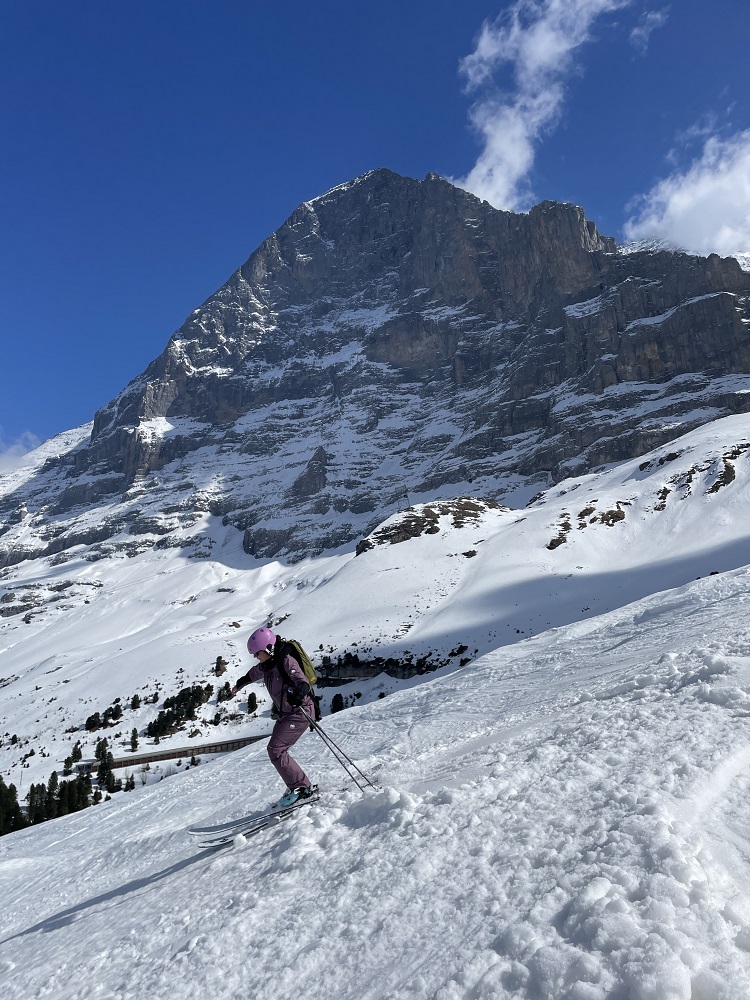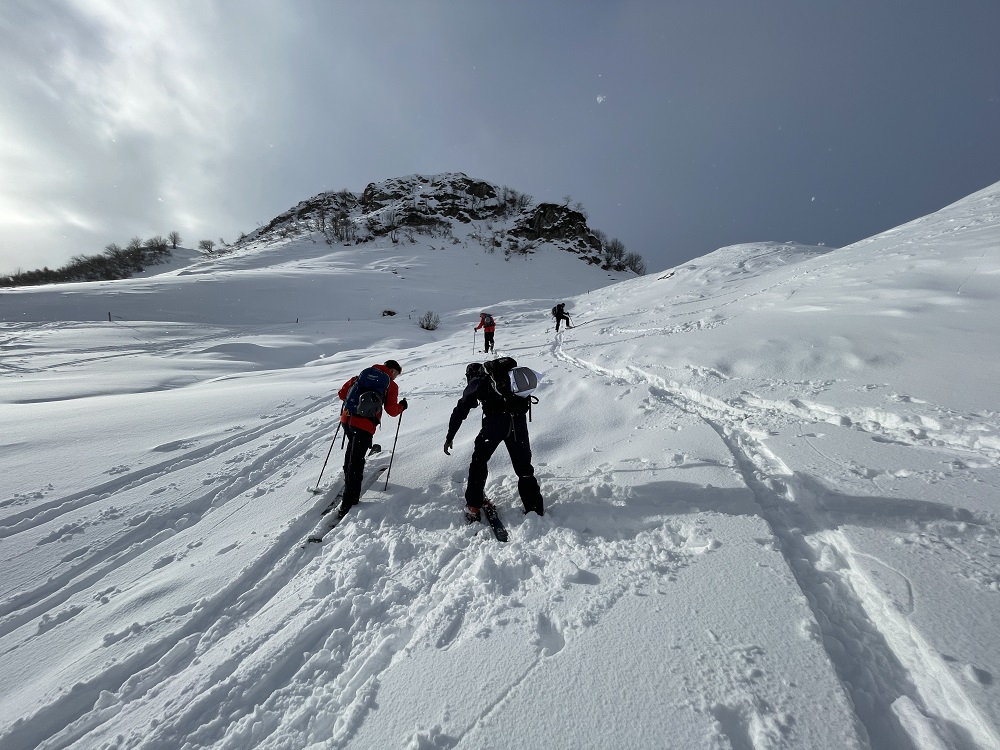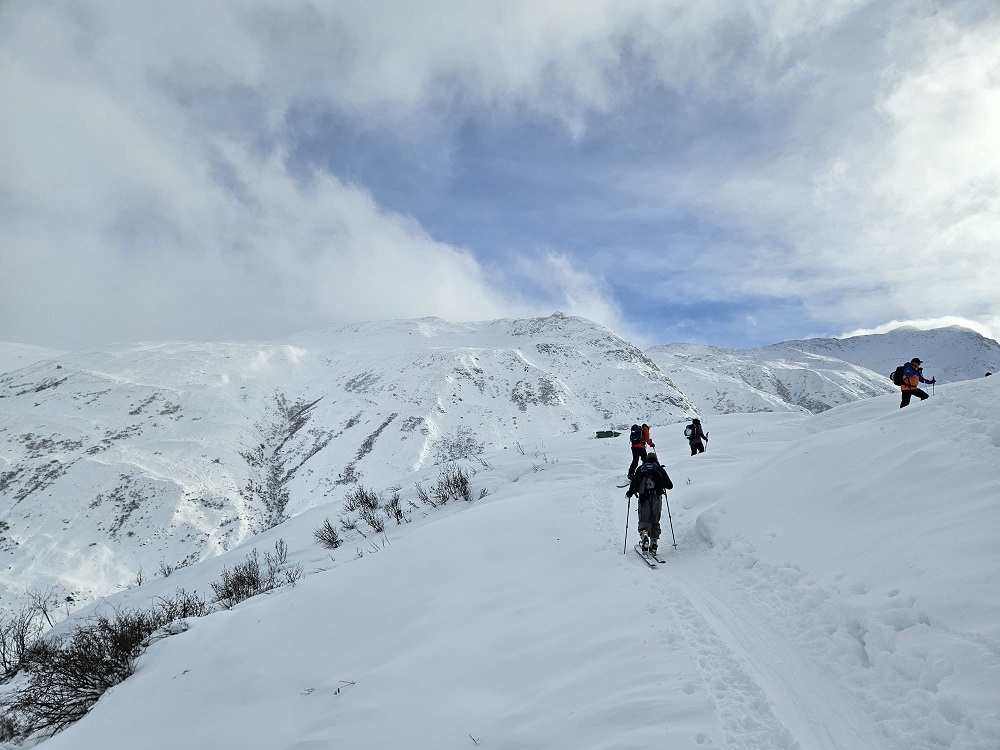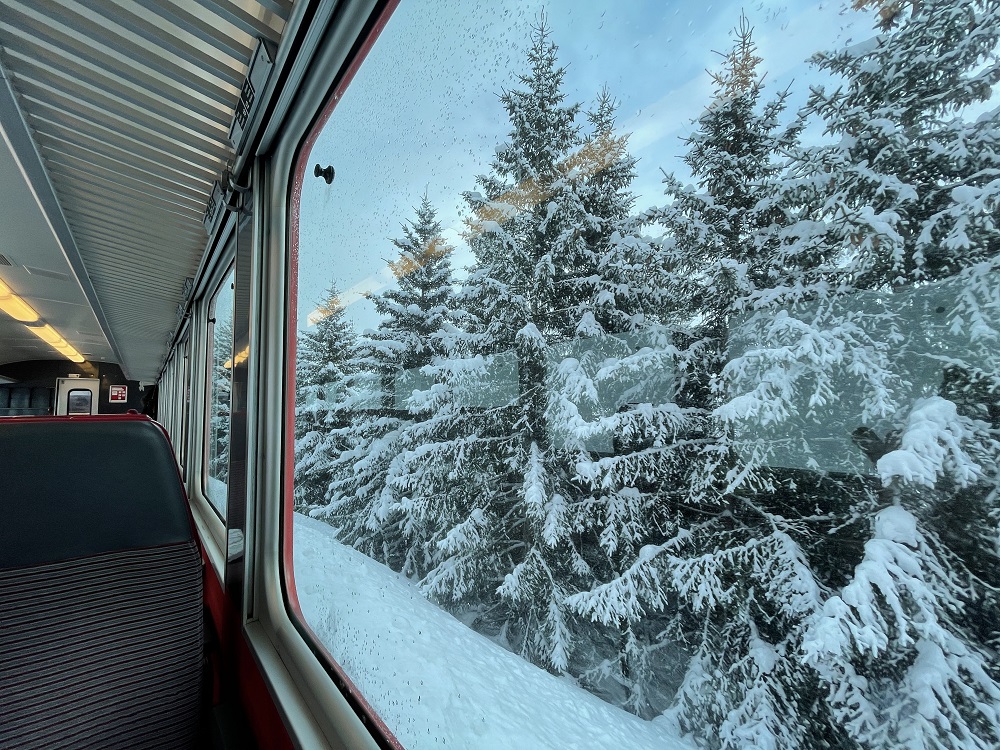The first time I heard of the Gotthard Tunnel was on a remote island off the Auckland Harbour in New Zealand. Kt and I were spending yet another extended long weekend on Great Barrier Island. It was the end of covid-hit 2020, and we were still making the most of my reduced hours in the tourism industry – and the fact that closed borders continued to keep the rest of the world out of our safe haven.
Over dinner with our airbnb hosts, the topic of Auckland’s standstill traffic predictably surfaced. We were staying with a Swiss-German couple, who had decided to stay permanently, after falling in love with everything else about New Zealand. Peter was incredulous at how long it was taking for Auckland’s second harbour crossing to even begin construction – when, back in 1882, the Swiss had already bored through the Alps to create what was back then the world’s longest tunnel.
Fast forward four years: I’m teleporting through the Gotthard Tunnel in the Swiss Alps on a weekly basis, riding the longest railway tunnel on earth as part of my office commute. As I type this on the train, I still can’t quite believe I’m here, on my way home to the foothills of Bellinzona from a work trip to Grindelwald, one I feel so privileged to be part of. So much so, I’ve been jolted out of a 3.5 year writing hiatus on this blog.
Yes, it’s been almost four years since I moved from New Zealand to Switzerland. Finally, the fog has settled enough for me to navigate – loosely – through the Swiss rules, Italian roads, German expressions, and European culture that have all been swirling in my over-steeped brain. No, I don’t feel ready to immortalize the experience in words. But maybe writing is exactly what I need – a way to wring out the sponge, so it can absorb better.
Four years. It used to feel like a long time. Four years of what felt like forever to graduate university. Four years of fresh-faced initiation into the complexities of corporate life in Singapore. Four years in New Zealand to learn a new world before restlessness set in. Four years in Switzerland… that somehow feel like I’ve been standing still. Does our perception of time slow as our years on this planet increase? Not just from age, but perhaps from the contrast to the intensity of earlier pursuits. Or do our dreams simply grow bigger and more intricate, shifting us from the quick wins of moving big buckets to the slow craft of sanding edges – refinements only revealed through the compound effect of time?
These thoughts surfaced after a humbling encounter with Michiko Imai over the Grindelwald work weekend. The Japanese mountaineering pioneer has a list of feats where any one would qualify as a lifetime achievement – including ‘the Trilogy’ of the hardest north faces in the Alps: Eiger (first woman on the direct route), Matterhorn (first all-women ascent), and the Grandes Jorasses.
“Chamonix”, Michiko chimed in at the translator’s mention of Grandes Jorasses. I smiled and nodded, as if I shared in the familiarity.
Not that I have any business on the steep north face of the Grandes Jorasses – a towering peak in the Mont Blanc massif, rising above the iconic Mer de Glace valley glacier that flows into Chamonix, from where a mere mortal like me would gaze up at in awe. Even before moving to Switzerland, Kt and I used to drool over epic videos of the UTMB (Ultra Trail du Mont Blanc) – a 171 km loop through France, Italy and Switzerland around Mont Blanc, starting and ending in Chamonix. Back then, we were trail running newbies in New Zealand. Chamonix was our mecca.
Two summers ago, we finally experienced a night at Rifugio Walter Bonatti, a panoramic mountain hut perched high on the Italian side of the UTMB route. The short hike from Lavachey in Val Ferret wound through pine forest before emerging above the treeline. The south face of the Grandes Jorasses loomed above us as the sun’s soft light slowly disappeared behind the mountains.
Inside the hut, the stillness gave way to a warm hum of busy chatter. We were seated with a group of French hikers doing the Tour du Mont Blanc (TMB), the 7-day version of the loop.
“C’est super! This has been the best hut so far”, said a lean lady in her late-fifties, sharing photos of previous huts along the way.
As if to prove her point, our dinner was promptly served in a series of appetizers, main course, and dessert, with the option of wine. We were utterly, pleasantly surprised. Compared to our baseline hut experience, this was luxurious. Back in New Zealand, huts are often more like what the Europeans call bivouacs – basic shelters with bunk beds and a long drop toilet separated from the main structure. Late night toilet trips required a treacherous walk in the cold, guided by a head torch, and always accompanied by the fear of something accidentally falling into the loo’s deep abyss. If we wanted hot meals, we had to pack our own portable stove and ingredients. In the Bonatti hut, not only were there working flushes in the toilet, hot water flowed through its faucets and draft beer on its taps.
Still, New Zealand’s lack of amenities came with its own luxury: raw, rugged wilderness all to ourselves. Somehow, the mountain huts became symbols of our broader experiences in New Zealand and Europe.

The Grandes Jorasses may be one of the most imposing peaks in the region, but it was the perfect wedding venue for Michiko, who climbed to the summit with her husband to get married. Back in the ski lift in Grindelwald with Michiko, my colleague – and buddy on the slopes that day – asked the 83-year-old legend when she last skied.
“Two years ago”
“Wow! Would you like to join us?”
“Too boring,” Michiko replied, half-joking, as she pointed to the groomed pistes below.
“Boring” isn’t a word I’d associate with snowboarding. But in Switzerland, the thrill-mometer is calibrated differently. I once joked that Swiss kids come straight out of their mothers’ wombs in skis. Turns out, it’s not far off. “One of my earliest memories is getting mini skis for Christmas,” a colleague once told me.
Like the locals, I’ve always felt the magic pull of the mountains – in equal parts awe and fear. But the common denominator ends there. While ski trips are part and parcel of a Swiss’ formative years, Kt and I learned snowboarding as rigid adults close to our thirties. What we lacked in malleability, we tried to make up for with dogged determination, committing deeply to the sport over three consecutive winters, weekend after weekend, driving 4-hours one-way from Auckland to the icy, volcanic slopes of Mount Ruapehu to work on carving the slopes. We were often overtaken by fearless 4-year olds zipping by at waist level. Little did I expect I’d be cheekily roasted by an 83-year old legend years later.

Just as our snowboarding learning curve plateaued, the terrain changed. Literally. Many locals who grew up in the alpine region genuinely find on-piste skiing boring, as they outgrow the local playground they frequented as toddlers. Instead, they seek untouched powder off-piste, often skinning far beyond the lifts to find new lines on ungroomed terrain.
“Skinning”, I learnt, refers to the strips of material made of mohair (Angora goat hair) or synthetic nylon fibres – “skins” – that attach to the bottom of skis or splitboards to prevent them from sliding backward when climbing uphill. And, yes, snowboarders, too, had figured out how to join the backcountry party. Invented in the early 1990s, a splitboard is a snowboard cut down the middle. The two halves are then separated and swapped around so they turn into two skis for gliding uphill, before being reattached for the descent. It sounds simple, but try executing this with thick gloves (or cold fingers) in freezing wind.

Suddenly, a new world opened up: the backcountry. Here, learning never stops. No two days on the same mountain are ever the same. Instead of simply focusing on our own s-curves, we go further to study the mountain itself: heightening our senses to read maps, assess sun angles, slope gradients, snowpack, and weather forecasts.
We learned all these during a two-day Avalanche Safety Course at Andermatt with Mammut Mountain School. Our classmates were a diverse bunch, none of whom grew up in the alps, united by a common curiosity and desire to explore the mountains in a new way. An IP lawyer who flew all the way from Greece. A software engineer from the Netherlands who came by overnight train. Two ex-Googlers from Israel now based in Zurich. And there’s us, the only two in the group lucky to be there because we won this experience as a prize – and live just a 1hr train ride away.
It reminded me how challenging, expensive – and improbable – this hobby can be for orophiles who live far from snow-capped mountains. I know this all too well, having grown up in tropical Singapore, where it’s 30 degrees year-round and the highest natural peak is 164m (no, not Marina Bay Sands, that’s taller at 203m).

As I made my way through fresh powder like a knife through butter, adrenaline surging, I thought to myself, I’ll never take this for granted.
Back in Grindelwald, after a day of (on-piste) snowboarding with my colleague, we found ourselves sitting on the grass in the backyard of Ueli, a mountaineer and former pro athlete, who had kindly invited us for drinks. We sat in the sun, exchanging stories, occasionally interrupted by the crackling avalanches that unfolded on the steep faces in front of us. I tried explaining what it was like to grow up in a place with no seasons – a concept many here find hard to grasp. When I first moved to New Zealand, I had been mesmerized by the changing colours of the tree outside my window.
“How does that even work?” one colleague struggled to wrap her head around the idea of a world without spring, autumn or winter. Yet, that was the only world I knew.
As my train emerges from the Gotthard Tunnel into the sunny southern side of the Swiss alps, I am reminded of the quiet power of persistence – how steady, almost imperceptible effort can, quite literally, carve a path through mountains. Such is the power of time and consistency.
I feel a fresh rush of wonder at how much more of the world there is to unearth, and to experience more intimately in the years ahead. I’d barely scratched the surface.
Still, I remain both humble and hopeful. If I live to 83, I’m barely at the halfway point.

One reply on “Off the rails: Thoughts in transit on a Swiss train”
What a great post, Gin! Love it! So inspiring!